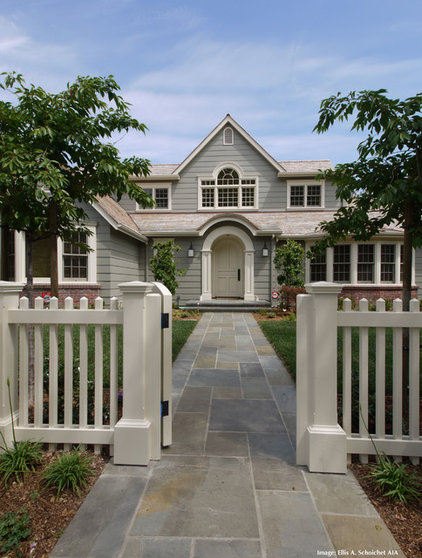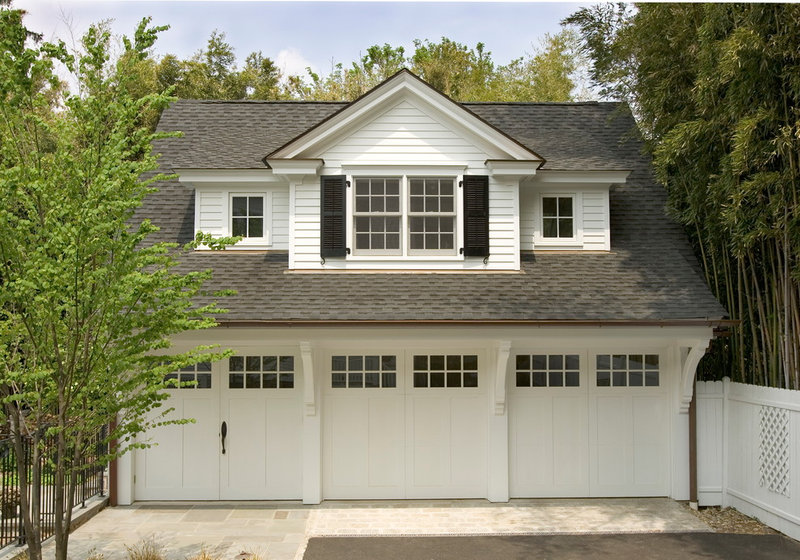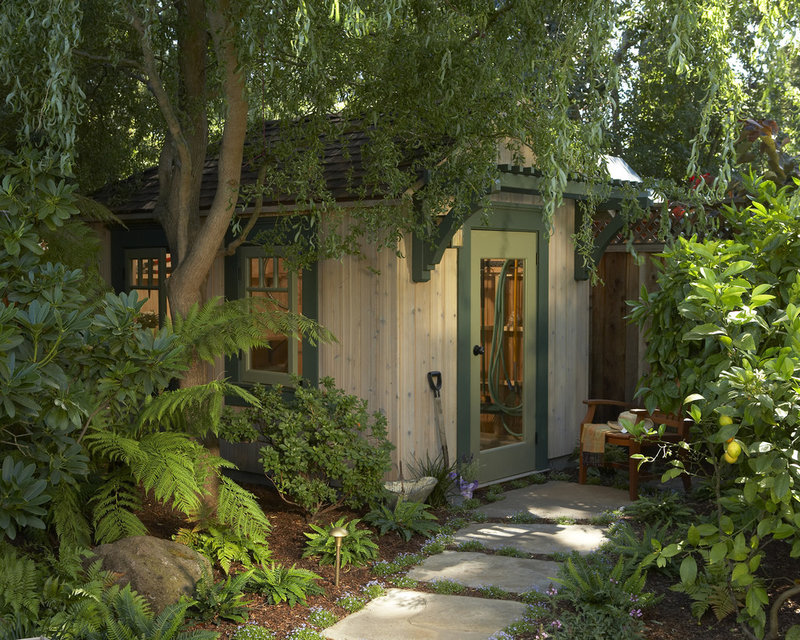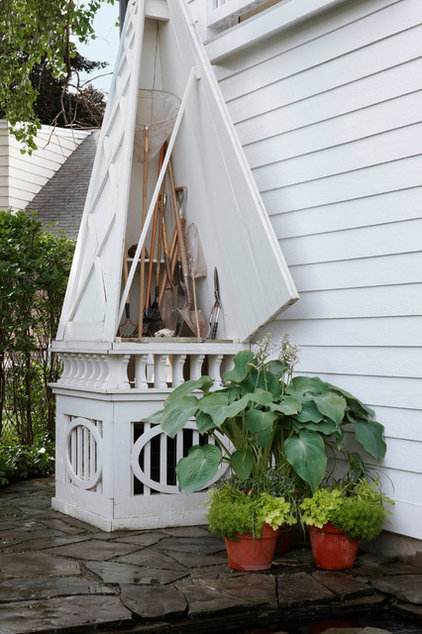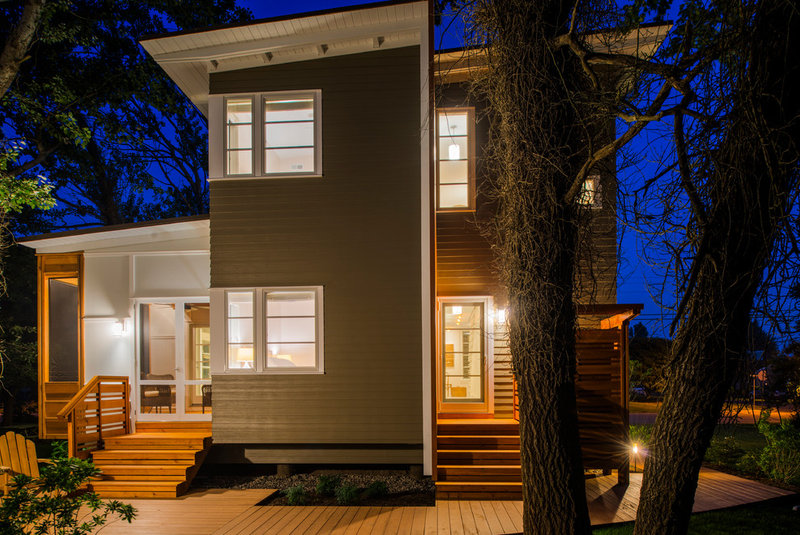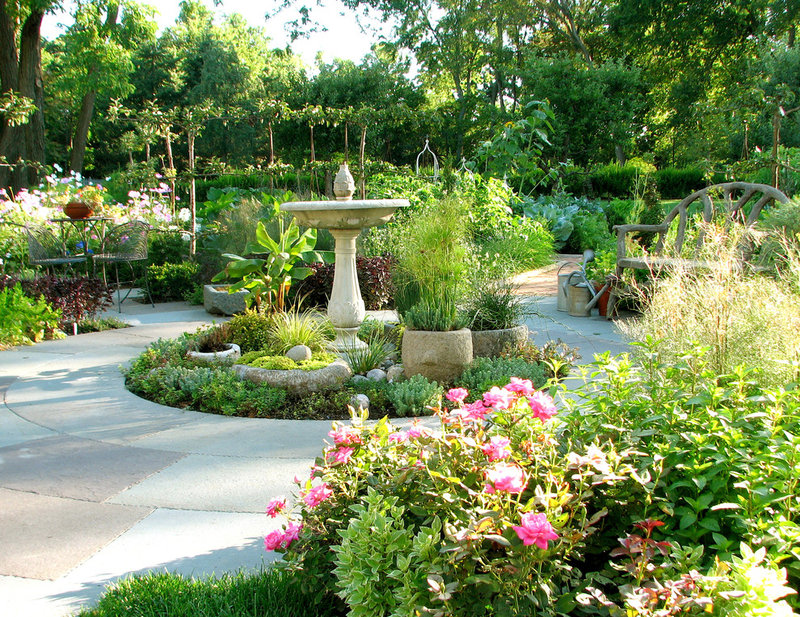How to Prepare the Exterior of Your Home for Hard Winter
A paved outdoor surface in the summer can get away with a lot of flaws — cracks, loose pavers, missing mortar. When you can see where you’re going, you can step around the flaws, but once the first snow falls and you’re shoveling the walk and the shovel keeps hitting the edge of that loose paver, making it even worse and slowing you down, you’ll wish you had taken the time to set it back in place.
Any crack or hole where water can pool and freeze in your hardscaping is going to become bigger when water, which expands when it freezes, settles in for a cold night.
What to do: For pavers set in sand, get some paver sand and a rubber mallet and reset loose pavers. If mortar is missing, mix some up and place it with a margin trowel. For small joints you can also get a tube of mortar repair (I like Quikrete), which you can apply with a standard caulk gun.
If you have a garage or shed where you store tools and supplies, a couple of housekeeping tasks are in order.
What to do: Make sure any things you’ll need for the winter — shovel, snowblower, rock salt — are easily accessible. That way when you’re late for work and need to clear the driveway, you won’t waste time digging through bikes, rakes and a volleyball net.
Look for liquids stored in the garage that will be harmed by freezing temperatures. Latex paint should not be allowed to freeze. Open it up and if it still seems good enough to keep, move it to the basement.
What to do: The most important tip for tool maintenance is to clean any dirt off the metal parts. Oiling the metal or spritzing it with WD-40 will get you extra points.
Now is also the time to inspect handles for signs of decay, so you won’t end up with a splintery mess when you dig into that 2-foot-high snowfall.
If the wood handle just needs a little TLC, sand it and oil or paint the wood. Store tools somewhere dry, and they’ll be ready to go when the ground thaws.
Even if you swept your deck at the end of fall, there will probably still be built-up organic material between the boards. This can lead to rotting of the boards and the structural framing.
What to do: Clean the stuff out with a stiff bristle broom or a pressure washer. Check your outdoor lighting, too. Replace bulbs as needed. When the sun goes down early and there is potential for icy paths and steps, good lighting is important.
Bird Baths and Other Water Features
When the mosquito threat abated, you may have relaxed about standing water, but freezing temperatures are a good reason to do another once-over.
What to do: Any birdbath, bucket, kiddie pool or chiminea that collects water can be damaged when that water freezes, so turn items over or cover them up.
Author:


